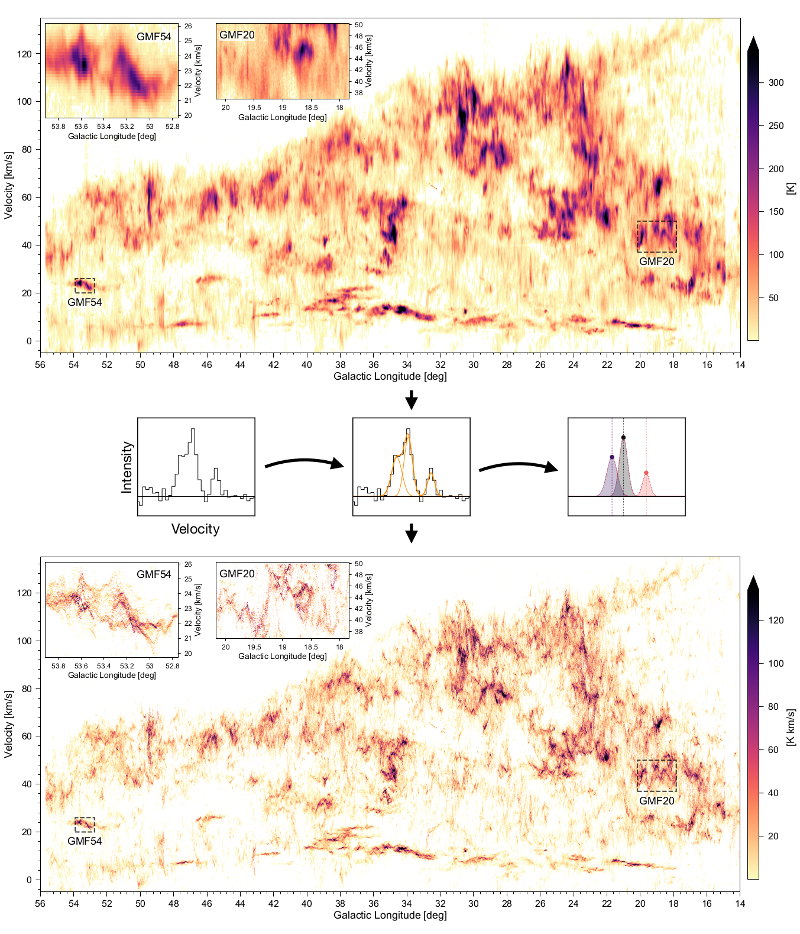| EPoS Contribution |
|
The detailed velocity structure and distribution of CO emission in the Galactic plane
Manuel Riener MPIA, Heidelberg, DE | |
| Understanding the detailed velocity structure of molecular gas at Galactic scales is of fundamental importance for understanding structure formation in the interstellar medium in different environments. To efficiently analyze the information contained in large Galactic plane surveys, we have recently developed the GaussPy+ package, which incorporates a machine-learning approach to automatically fit millions of spectra and velocity components. Combined with a Bayesian approach of determining distances to the identified components, this enables us to look for systematic trends that are directly linked to the physical processes in the gas. I will present results from our ongoing project that focusses on exploiting the detailed kinematic information contained within large Galactic plane surveys to improve our knowledge about the molecular gas within the Milky Way, in particular its distribution, its connection with interstellar dust, and the importance of its dynamics on the star formation process. I will discuss global properties we extracted from the gas emission of the Galactic Ring Survey (GRS), such as a characterization of its complexity and distribution along the line of sight. I will also describe our work on the velocity structure of molecular clouds across Galactic environments and how it can give insight to the universality of the turbulent velocity fluctuations that we see in the observations. Moreover, I will present first results of our ongoing efforts to produce a full Gaussian decomposition of the entire SEDIGISM data set, which will be an essential part in our planned homogeneous analysis of the distribution and velocity structure of 13CO in the entire inner Galactic plane. | |
 | |
| Caption: Top: Position-velocity (PV) diagram of the entire Galactic Ring Survey integrated over the full Galactic latitude coverage. Middle: Schematic illustrating the transformation of the data via the Gaussian decomposition, where each resulting data point represents the integrated intensity of a Gaussian fit component concentrated at its centroid position. Bottom: PV diagram of the transformed data set. Dashed boxes in the top and bottom panel indicate two giant molecular filaments that are shown in more detail in the insets to highlight the ubiquity of qualitatively similar velocity fluctuations. The inset figures are only integrated along the Galactic latitude range of the respective GMFs. | |
| Collaborators: J. Kainulainen, OSO, SE J. D. Henshaw, MPIA, DE H. Beuther, MPIA, DE J. Orkisz, OSO, SE Y. Wang, MPIA, DE |
Key publication
Suggested Session: Galactic Dynamics |

